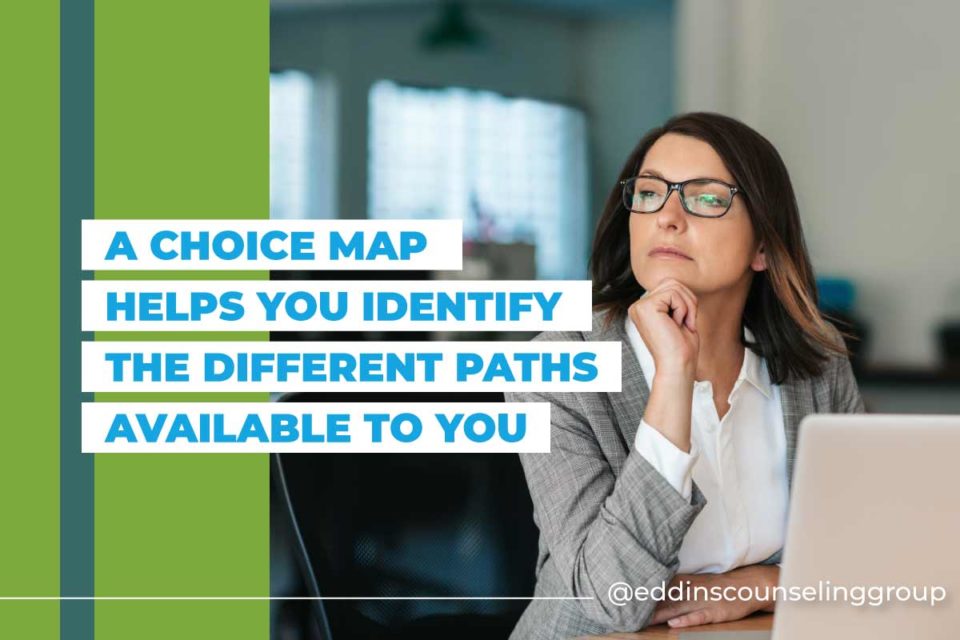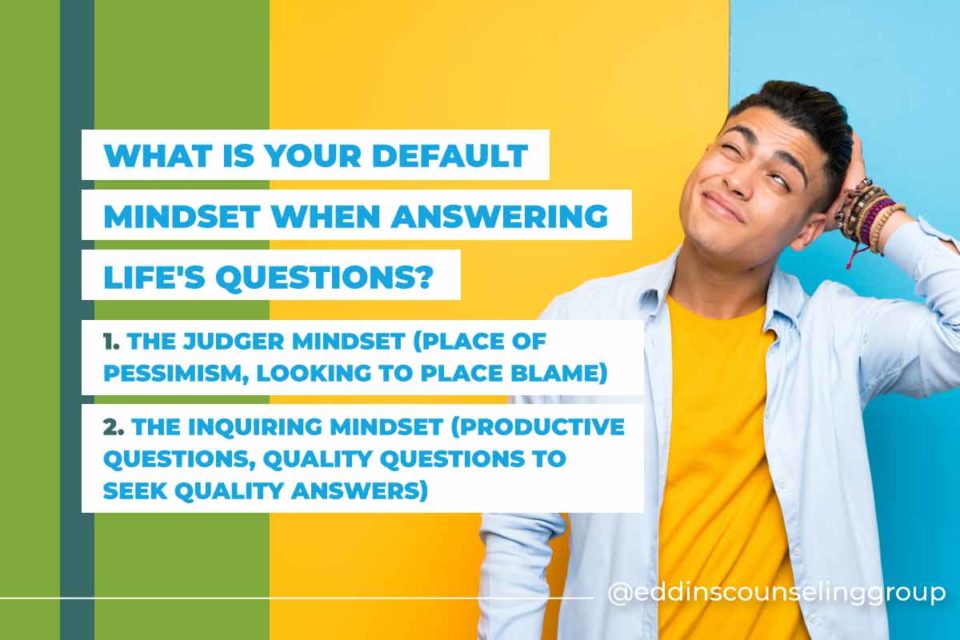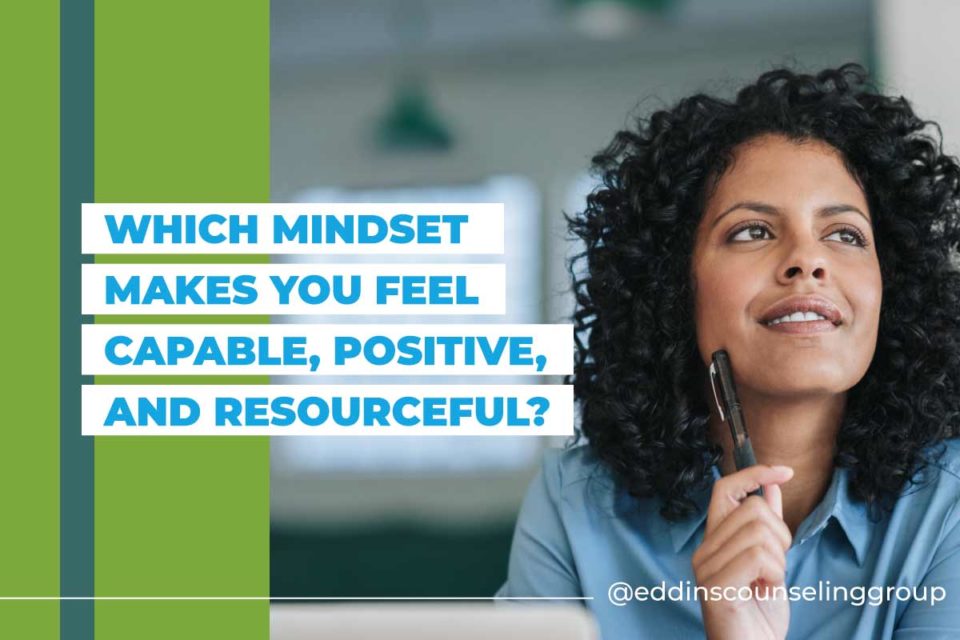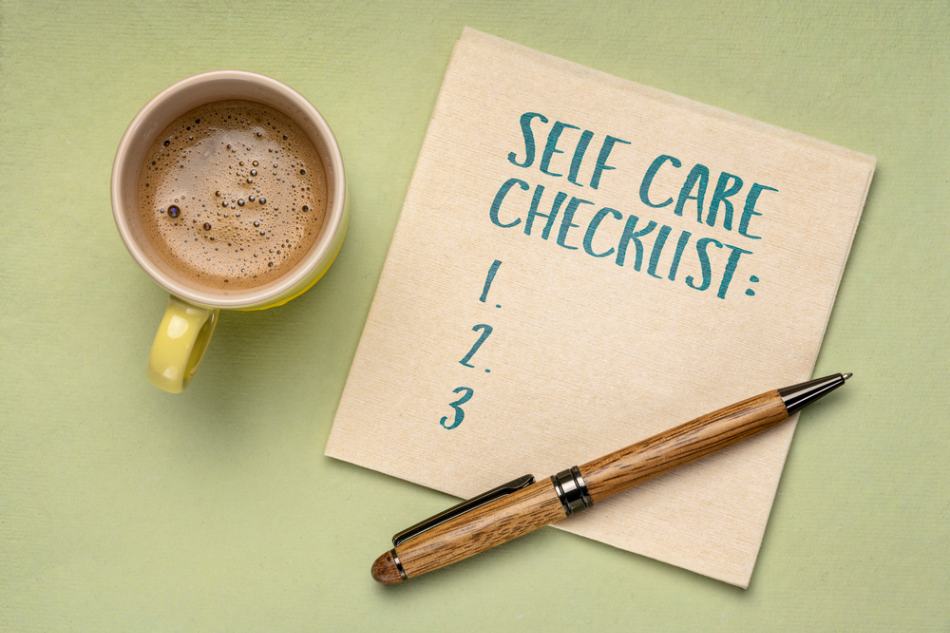June 20, 2022
What is a Choice Map & How Can It Help Change Your Life?
Written by Sara Lane
Posted in Self Help / Personal Development, Tools & Exercises and with tags: mindset, negative self-talk
What is a Choice Map & How Can It Help Change Your Life?
Have you ever felt stuck? You may feel mired in a situation or a job or a relationship. There is also a strong possibility that you are stuck in a mindset.
You can’t see it but the way you look at things is impacting you in a negative way. Most importantly, it’s the automatic questions you ask yourself that shape your behavior and perspective.
Without realizing it, we become judgmental. We judge others and we judge circumstances. Quite often, we judge ourselves.
A giant step toward getting un-stuck relationally is to do the work and recognize this judgmental mindset. That’s where a choice map comes in handy.
What is a Choice Map?
Whether it’s literal or just something you visualize, a choice map helps you identify the different paths available to you.
At every turn, you have options. Choosing the best available option requires you to ask the best available questions. Of course, it’s normal to seek out answers but that process begins with thoughtfully asking the most helpful and productive questions.
Your choice map helps you discover new questions in the name of making new choices. In turn, this combination of new questions and new choices adds up to create new possibilities.
Renowned author and coach, Marilee G. Adams, calls this the “inquiring mindset.” It is at the other end of the spectrum from the aforementioned judger mindset.

The Judger Mindset
This is a place of pessimism. Almost unknowingly, you slip into a negative point of view — ready to fail and ready to blame. When someone with a judger mindset reaches a crossroads, they ask judger questions like:
- What’s wrong with me?
- What’s wrong with them?
- Whose fault is it?
- How can I prove I’m right?
- Why are they so clueless and frustrating?
- Haven’t we been there, done that?
- Why bother?
To counter this all-too-common mindset, Adams reminds us that there is:
- no progress without change
- no change without learning
- no learning without questions
- no questions without curiosity
- no curiosity or questions without an active inquiring mindset
The Inquiring Mindset
To follow are just some of the traits identified by Marilee G. Adams that are displayed by someone with an inquiring mindset. Such a person knows that:
- The most productive questions do not yet have answers
- Such questions draw value from their power more than their potential answers
- If you seek quality results, you must discover quality questions
- Patience is crucial because, without it, you can miss key questions
- Missed questions can be the source of chaos and frustration
- To check your own assumptions and biases, you must keep finding questions to ask yourself
- Maintaining an active Inquiring Mindset feeds better relationships and results
“Questions,” says Adams, “shape how we think, feel, act, and relate.”

How Can a Choice Map Help Change Your Life?
Imagine yourself at a fork in the road. By fork, it might literally have multiple roads/tines. How do you know which way to go? Your decision is mostly shaped by your mindset. A choice map places you at such a crossroads. First, ask the judger questions listed above. See how that feels.
After a deep breath, switch to the inquiring mindset. Replace the judger questions with new inquiries like:
- What works?
- What am I responsible for?
- What are my choices?
- What’s useful about this?
- What can I learn?
- What’s the other person thinking, feeling, and needing?
- What is possible?
Again, see how this feels. It won’t take long to identify which mindset makes you feel capable, positive, and resourceful. This fundamental exercise is the first step toward change. To learn more and get yourself on this life path for good, let’s connect soon and talk about transitions and the possibilities.
Change Your Life with These Key Choice Map Questions
To quickly review, a choice map helps you identify the different paths available to you.
Choose the best available option requires you to ask the best available questions. While it’s perfectly natural to seek out answers first, choosing wisely and correctly for you is a process that starts with asking the right questions.
Essentially, your choice map helps you discover new questions in the name of making new choices. In turn, this combination of new questions and new choices adds up to create new possibilities. Renowned author and coach, Marilee G. Adams, calls this the “inquiring mindset.” It is at the other end of the spectrum from the judger mindset.
These Key Choice Map Questions May Change Your Life
To follow are the questions as phrased by the experts at Inquiry Institute — an organization founded by the aforementioned Marilee Adams. Of course, you can tailor them to your particular needs but the idea is to adhere to their general purpose.
The key choice map questions are:
- What do I want?
- What are my choices?
- What assumptions am I making?
- What am I responsible for?
- How else can I think about this?
- What is the other person thinking, feeling, needing, and wanting?
- What am I missing or avoiding?
- What can I learn…from this person or situation? …from this mistake or failure? …from this success?
- What action steps make the most sense?
- What questions should I ask (myself or others?)
- How can I turn this into a win-win?
- What is possible?
You can surely discern the positive point of view made possible by this line of questioning. It’s not an attempt to pollyanna your decision-making but it diligently evades self-sabotaging perception.
The expectation is that you already have so many answers within yourself. To discover this innate power requires identifying and asking new and curious questions.
How These Questions Derive Their Power
The goal of the choice map is to find ways to introduce learner-style questions into your everyday thinking. As mentioned above, you can easily alter the wording to address a specific situation. Regardless of the details, these questions have the power to:
- Open your mind
- Change your perspective
- Alter your mindset
- Introduce new choices and possibilities into your life
Avoid only looking for what can go wrong. Permit yourself to imagine all the things that can go smoothly. When you are not judging, you have the opportunity to learn without immediately throwing up obstacles.
You have two eyes and two ears. You have one mouth. It only stands to reason that you should spend far more time observing than pontificating. That sentiment may be a bit cliché but there is a reason why it has endured: it is accurate.
Key Questions in a Group Setting
The inquiring mindset is incredibly valuable in a group setting. This may mean work, school, or any form of collaboration. Utilizing the fundamental choice map questions above can help you:
- Increase general productivity
- Promote teamwork
- Inspire new ideas and innovation
- Enhance communication skills
- See past deeply engrained mental blocks
- Empower you to both tackle present problems and also visualize future results
Where and How Can You Learn More and Get Started?
Everyone wants to have better relationships and develop more productivity in their lives. At the same time, it makes sense to be skeptical of approaches that promise results.
The choice map/inquiring mindset concept is not a trend but a mindset that will continue to serve you. We urge you to look deeply into this idea.
In fact, we would love to introduce you more fully to what it has to offer. Read more about making choices and transitions.
Ask yourself: what do I want?
Follow-up with: which action steps make the most sense?
To get started with one of our Houston, Montrose, or Sugar Land therapists, call (832) 559-2622 or text (832) 699-5001 us today!
Why You Feel This Way
Get instant access to your free ebook.
Grounding & Self Soothing
Get instant access to your free ebook.
7 Mood-Boosting Tips
Get instant access to your free ebook.





















